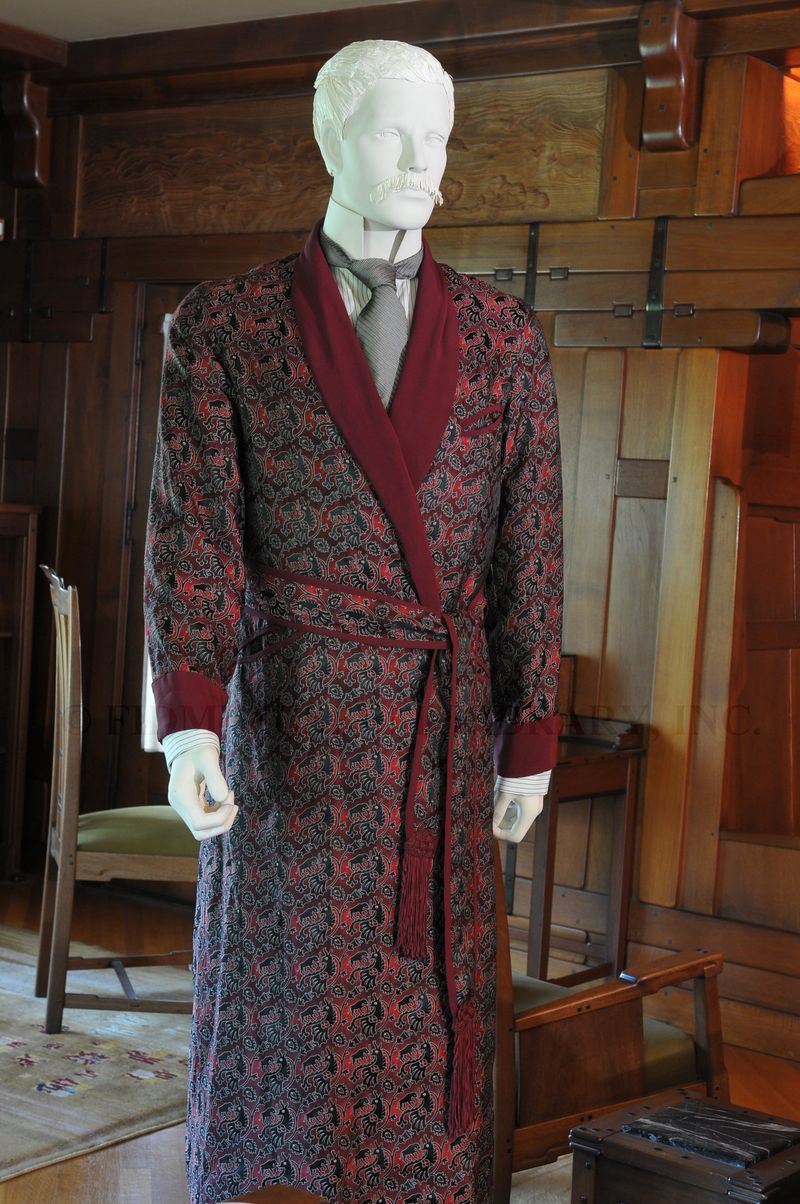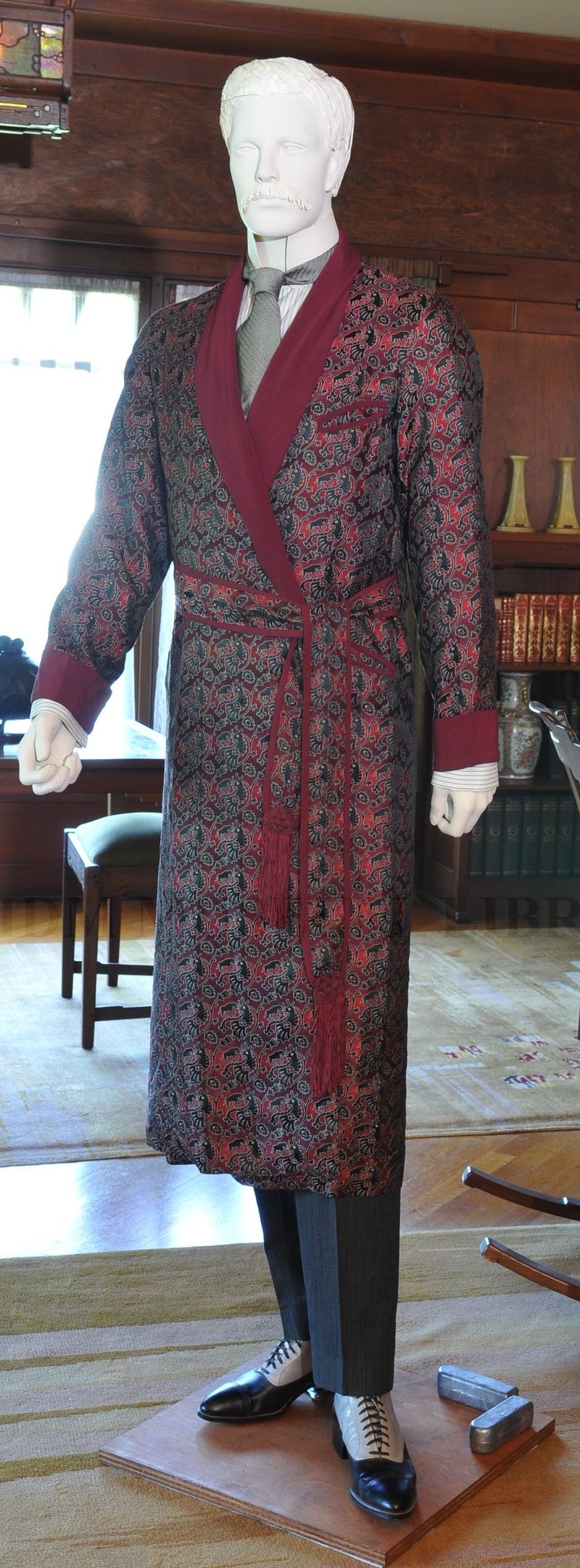Throughout the 19th and into the first decade of the 20th century, mainstream formal and business dress for men was a black suit and light colored (often white) shirt paired with a black bow-tie. Constructed from durable wool and lacking all decorative trim, this quasi-uniform was worn across the classes. For informal occasions, men could chose from a wider variety of garment-types, including casual lounge or ditto suits. Looser fitting than a business suit, ditto and lounge suits were matched 3-piece suits made from marginally more flamboyant fabrics, such as tweed or checked wool. At home, however, an otherwise soberly dressed gentleman could indulge himself with a richly colored dressing gown.
 Dressing gown
Dressing gown
1905-1915
Museum purchase
2008.5.14AB
The dressing gown provided a relaxed alternative to the confining stiffness of the business suit. Associated with physical and mental relaxation, a dressing gown was worn almost exclusively at home. A man donned a dressing gown "among his own [family] in the sitting room where he is resting in the evening from a tedious day, in his library or home office when he is writing or reading, and to the breakfast table for a late Sunday breakfast."1 In addition to inviting relaxation, wearing a dressing gown also served a more practical purpose; providing warmth in the days before centralized heating.
In stark contrast to the sober business suit, dressing gowns were usually made from brightly colored and/or densely patterned silk or rayon. Modest amounts of trim and embellishment were used, typically on the sash. Period advertisements and descriptions indicate that the fringe and frogs on the self-fabric sash of this dressing gown were common in the early 20th century. As pictured here, a dressing gown was typically worn over the basic elements of street dress, the shirt, tie and trousers. Our silk dressing gown features a repeating pattern of foliage, dragons and an unidentified mythical beast. Fanciful patterns, often featuring motifs borrowed from Asia or the Middle East were common, as were stripes and plaids. The popularity of orientalist motifs links this 20th century dressing gown with an earlier type of informal man's garment, the banyan. Notable is the T-shape of both the banyan and the dressing gown. This similarity in shape, nearly unchanged in contemporary dressing gowns, indicates how slowly male dress evolves.
You might be wondering where these photos were taken. In 2008, the FIDM Museum had the fantastic opportunity to collaborate with The Gamble House, a California Arts and Crafts landmark. To celebrate The Gamble House centennial (1908-2008), we populated the house with 12 mannequins representing the Gamble family and friends in an exhibition called, "Fashionable Dress in an Artistic Landmark." The dressing-gown clad gentleman pictured here is Mr. David Gamble, family patriarch. Each mannequin was dressed in the style of 1908 with garments drawn from the FIDM Museum collection. This joint exhibition was a unique opportunity to remind visitors that The Gamble House is both an architectural wonder and a former private home. It also reminded us that our nearly all of our historic garments were once worn by real people, not just our mannequins!
1 Rittenhouse, Anne. "Endless Variety in Choice of Costumes for the Season, All Tend to Improve…" New York Times 7 Feb. 1909: X5.



That is a very gorgeous dressing gown–and I love the story behind their designs. What has amazed me most is The Gamble House! It is utterly divine!
The Gamble House is really a local treasure! When you’re in the area, it’s definitely worth the trip. Collaborating with the Gamble House on the exhibit was lots of fun and an honor for the Museum.